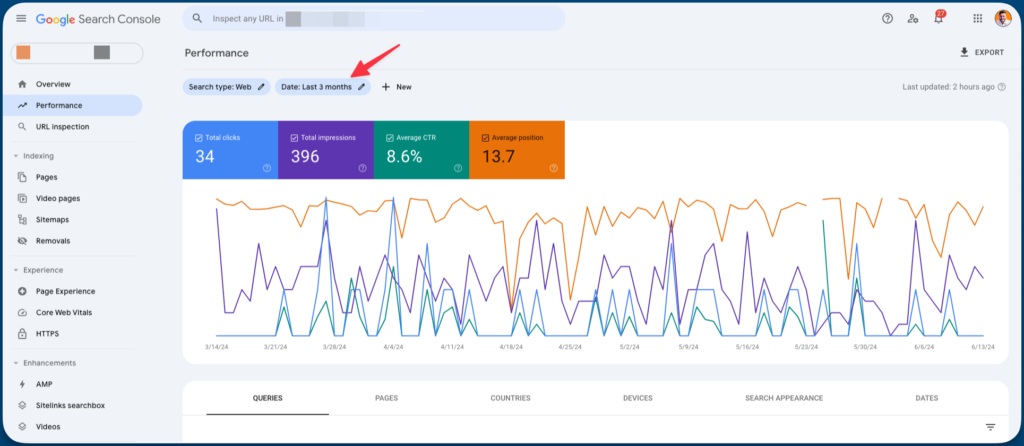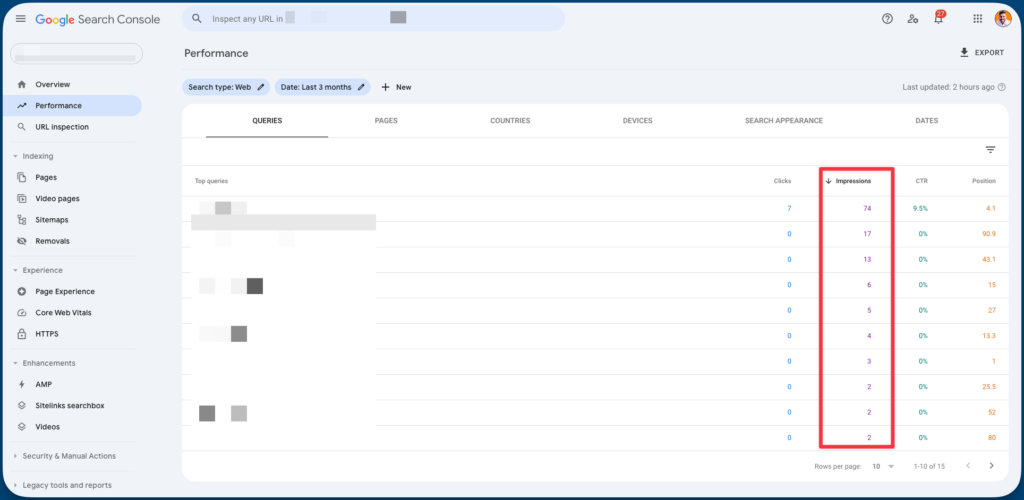1. Optimizing content for conversions should be the ultimate goal of content marketing.
2. Add alt text to optimize images for SEO. It can be used as an additional source of traffic.
3. Build background in introduction section around a single core point. This way, you will not struggle with writing intros.
4. Always focus on quality when posting on blogs and focus on quantity when repurposing those blogs.
The good thing about the Internet is everybody can sell. Sadly, the problem is also the same: everybody can sell.
The internet has created opportunities for all but has led to cutthroat competition. The solution? Create content that converts. What good is the traffic if it doesn’t put money in the bank? To create conversion-optimized content, one must understand their audience first.
This involves knowing their pain points, interests, and behaviours. Tailoring your content to address these specific needs makes it more relevant and engaging, increasing the likelihood of conversion.
When you start creating content, it’s easy to get carried away. I’ve made a simple checklist to create content that converts for myself and my clients. These easy-to-follow steps will ensure you don’t create content that’s good for nothing.
1. Understand Your Audience
Before you start writing, know who your readers are. What are their interests, pain points, and needs? Tailor your content to address these aspects. Use language and examples that resonate with them. From a Marketing perspective, understanding your audience helps create better CTAs.
I consider CTA to be the most essential element of a page. According to HubSpot, personalized CTAs perform 202% better than basic CTAs.
2. Focus on Value
Always aim to provide value in your content. Whether it’s solving a problem, offering a new perspective, or providing helpful information, make sure your readers walk away with something beneficial. High-value content builds trust and encourages readers to take action.
The problem with most content is that the content is over-optimized for search engines. The search engines are a wall of code and will never use your content. When you over-optimize your content for search engines, you miss out on being relevant to the end user.
The value is hidden in the relevance of the content.
3. Craft Compelling Headlines
Your headline is the first thing readers see, so make it count. A compelling headline grabs attention and entices readers to click through. Use clear, concise language and highlight the benefit or value of reading the post.
Always write the headline at last, after finishing the whole post. Also, focus on conversational style in the headline. Doing so eliminates the chances of being salesy and click-baity. Focus on the outcome in the headline.
The reader should clearly understand the outcome just by reading the headline of your post. Look at the headline of this post. The fact that you’re reading this post means I’ve done a decent job of writing the headline.
4. Write Engaging Introductions
Hook your readers from the start with an engaging introduction. Pose a question, share a surprising fact, or tell a relatable story. The goal is to draw readers in and make them want to read more.
I have struggled with writing intros since I started my career. It gets even more difficult when you don’t know your target audience. After years of struggle, I have simplified the process. Here’s what I need to write killer intros:
- Target audience
- 3-4 points to build background
- One search intent of the target audience
I don’t struggle anymore since I started writing intros with these three inputs. Another significant change I’ve made is including a “Key Takeaways” section highlighting the key points of the whole post. Making it easy for the reader to find what they’re looking for.
And no, this doesn’t steal the traffic from the page. Making it easier for readers to find what they’re looking for makes them stay longer. How?
Imagine you’re looking for a step-by-step guide on picking up a niche. If you find a page summarising the key steps, wouldn’t you be interested in reading the whole post to find the detailed answer?
Key takeaways act like meta descriptions, informing readers that what they’re looking for is covered on this page.
Make the “Key Takeaways” section as relevant as possible. If the reader finds that section relevant, chances of leaving immediately, even if they’ve got the answer, is negligible.
5. Use Clear and Concise Language
Avoid jargon and complex language. Write in a clear, concise manner that’s easy to understand. Short sentences and paragraphs improve readability and keep readers engaged.
Imagine you’re writing an email to your friend. You wouldn’t bush around. You’d directly come to the point, use simple language and avoid fancy terms.
The trick is to create content relevant to users, everything else will automatically fall in place.
6. Incorporate Visuals
Use images, infographics, and videos to break up text and make your content more engaging. Visuals can also help explain complex concepts and keep readers interested.
From an SEO standpoint, multimedia, especially images, will help you increase the chances of ranking for your target keyword. Image SEO is one of the most underrated practices, and I see several beginners and even brands take it lightly.
You can optimize the image for the target keyword by using the alt text when you use images. Search engines use alt text to describe the image to visually impaired users and understand the context of the image.
7. Provide Actionable Advice
Give your readers practical, actionable advice they can implement immediately. Step-by-step guides, how-tos, and checklists are great ways to provide actionable content. This helps your readers and positions you as an authority in your niche.
One good thing about providing actionable advice in your content is that you can repurpose the same advice for various personas, search intent and value propositions on social media.
The bottom line, repurposing actionable advice is straightforward. Repurposing on social media ensures your blog gets social traffic as well.
8. Use Data and Examples
Support your points with data, statistics, and real-life examples. This adds credibility to your content and helps persuade readers. Whenever possible, link to reputable sources to back up your claims.
I have a rule I practice in my writing. “Never make a point without a story & never tell a story without making a point.“
Data and examples are houses of tons of stories. You can always devise a practical scenario if you don’t have a story. Use AI to come up with such scenarios. You’ll be surprised what AI can do in such cases.
9. Include Clear Calls to Action (CTAs)
Guide your readers on what to do next with clear and compelling CTAs. Whether signing up for a newsletter, downloading a resource, or clicking an affiliate link, make sure your CTAs are prominent and persuasive.
Many beginners will make the mistake of focusing way too much on content. I’ve wasted over a decade making this very mistake.
Always focus on the CTA of the post. I never begin writing a post without having a clear CTA in mind. In my opinion, the most crucial element of conversion-optimized content is the CTA.
No matter how good content you write, people will never read it fully. This doesn’t mean you put out garbage content.
When it comes to content, focus on relevance, and when it comes to conversion, focus on CTA.
10. Optimize for SEO
Incorporate relevant keywords naturally into your content to improve search engine rankings. Use keywords in your headlines, subheadings, and throughout the text. Also, optimize meta descriptions, alt text for images, and internal linking.
The trick to winning at SEO is not do any SEO at all. Focusing way too much on optimizing for search engines leads to inhuman content that’s far from helpful, let alone relevant.
Stick to the fundamentals of SEO & you’ll be fine.
11. Edit and Proofread
High-quality content is free of errors. Always edit and proofread your work to ensure it’s polished and professional. Typos and grammatical errors can undermine your credibility.
Use Grammarly for grammar assistance & Hemmingway editor to make your content reader-friendly. Never edit the same day you wrote the blog. Take a walk and edit after your mind is fresh.
12. Update Regularly
Keep your content fresh and up-to-date. Regularly review and update older posts to ensure they remain relevant and accurate. This not only improves the user experience but also boosts your SEO.
Here’s an easy way I use to update my content for free.
Step 1: Log in to the Google Search Console
Step 2: Set the filter to the past 3 months

Step 3: Sort impressions data in descending order

Export the data & focus on the keywords with the most impressions. Google thinks your pages should rank for those keywords, and by optimizing the content around those keywords, you can not only update the post but also rank for more keywords.
Ready to Create Conversion Worthy Content?
The reason why creating content has gotten difficult is the abundance of information, especially with AI. Now, anyone can write on any topic by giving a single line as a prompt. But is it enough? Definitely Not.
With AI becoming mainstream, there’s no shortage of content. However, content that converts is rare. These tips are useful for those who want to create less, yet effective content. If you think the volume of content is useful, especially for a primary blog, these tips won’t work for you. Volume works only for social platforms.


